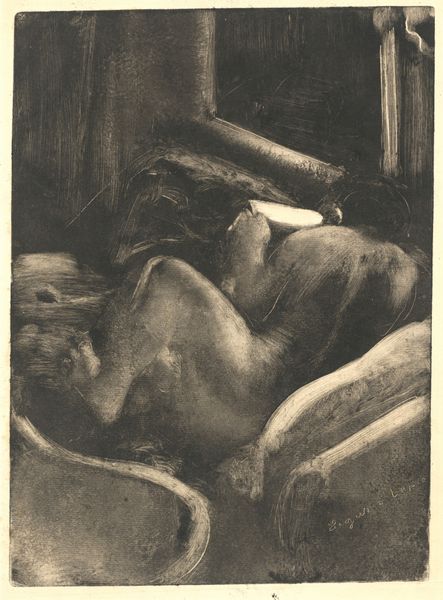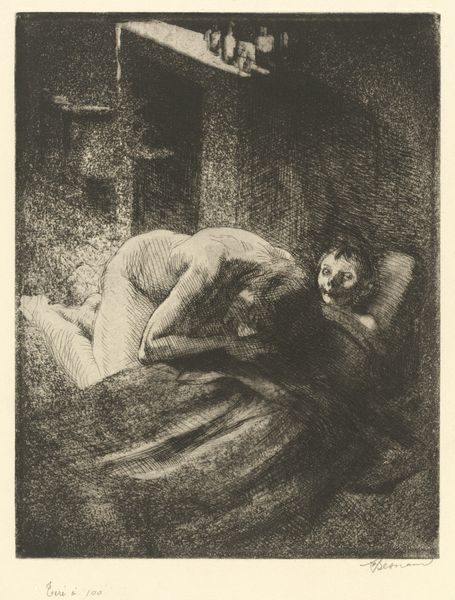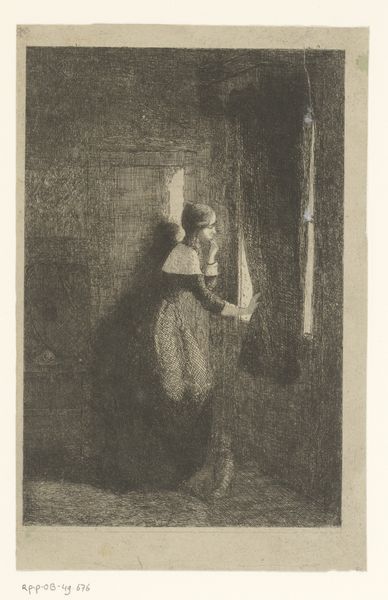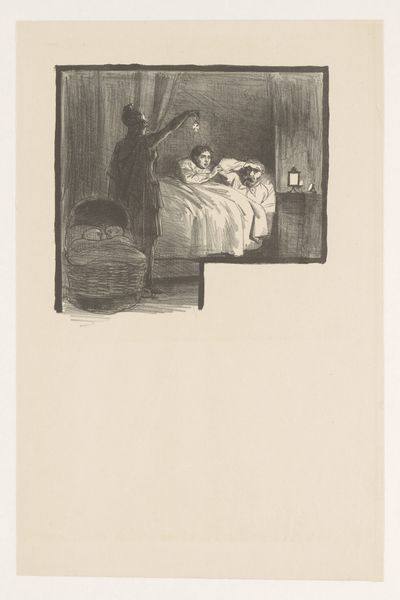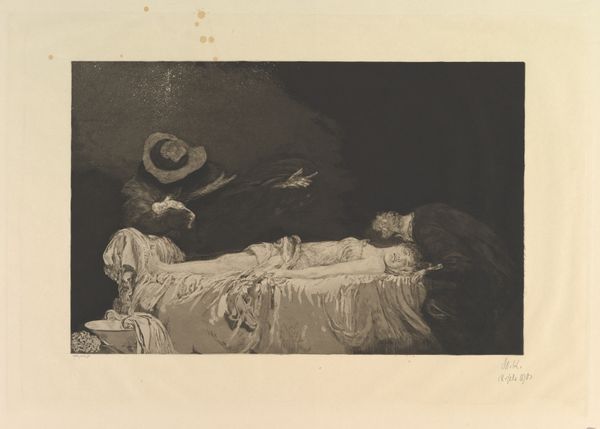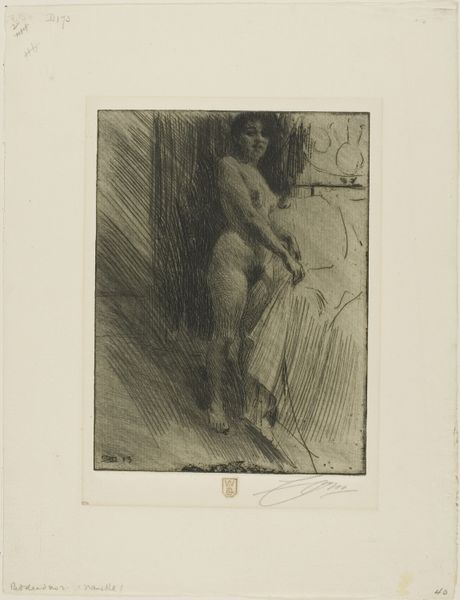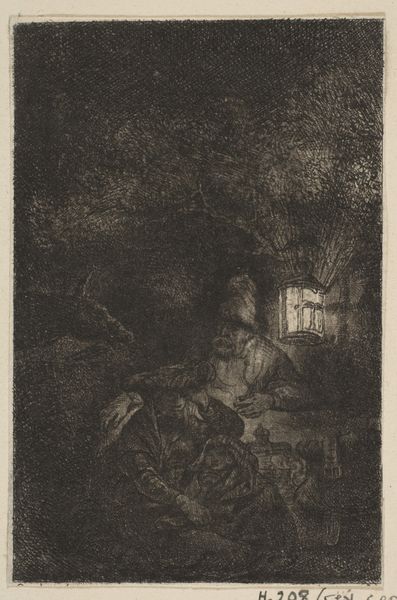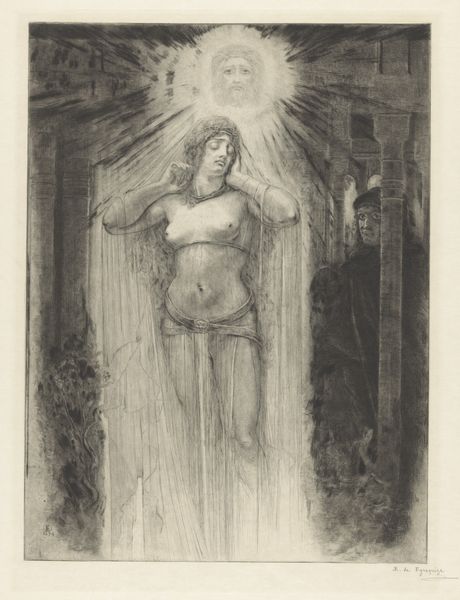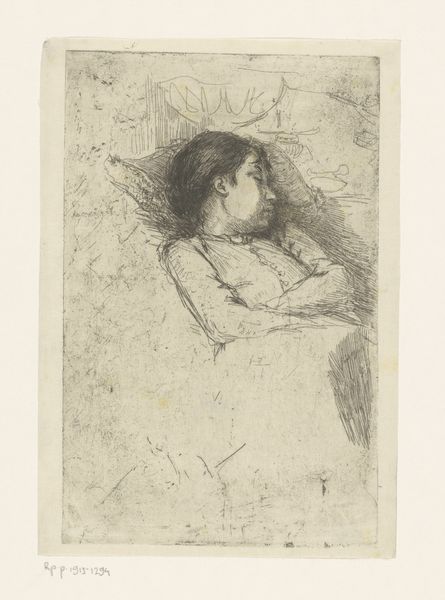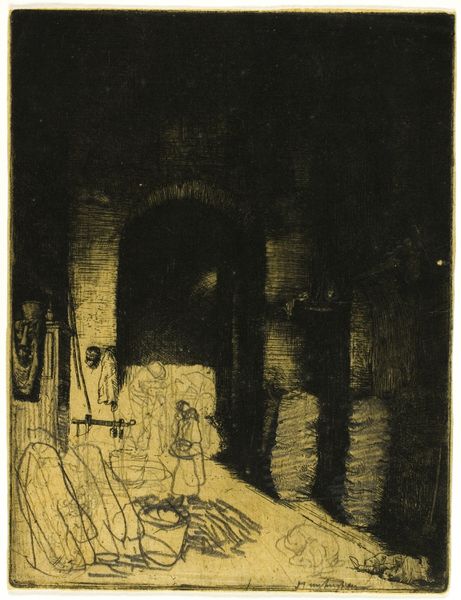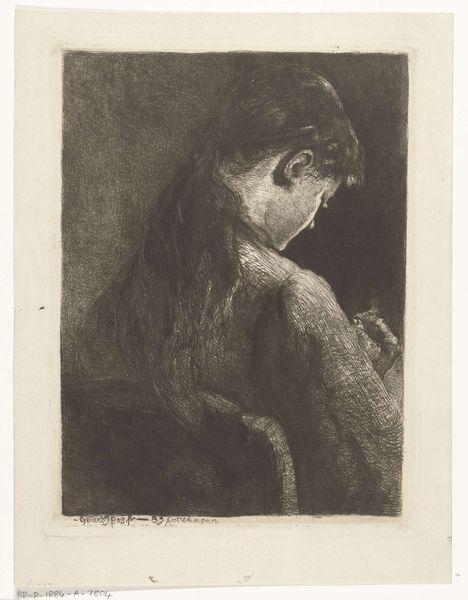
drawing, print, etching
#
portrait
#
drawing
#
narrative-art
# print
#
etching
#
landscape
#
symbolism
Dimensions: Plate: 17 15/16 × 12 3/16 in. (45.5 × 30.9 cm) Sheet: 21 13/16 × 16 1/8 in. (55.4 × 40.9 cm)
Copyright: Public Domain
Editor: We're looking at "Awakening," an etching by Max Klinger, part of the "A Love" series created between 1887 and 1903. There's a woman seated on a bed looking towards the window, but the darkness really sets a pensive mood. What draws your eye, and how do you read this piece? Curator: The tonal range here is critical. Klinger uses the etching medium to create a complex interplay of light and shadow. Notice how the linear precision defining the landscape seen through the window sharply contrasts with the velvety darkness enveloping the figure, thereby generating a potent visual and thematic dialectic. Editor: I do see that contrast now. Is there a structural reason he did that? Curator: Precisely. The structure of the composition forces a reading of oppositions: interior versus exterior, darkness versus light, perhaps even a tension between the real and the ideal. Klinger's use of the window frame operates as both a compositional element and a symbolic device, mediating the relationship between these disparate realms. What significance might we ascribe to the lamp’s placement in this construction? Editor: Hmm, that lamp feels strange, floating in the darkness...almost dreamlike. Is it guiding her awakening, maybe? Curator: Possibly. Furthermore, note the textured quality inherent within both sections – the landscape depicted beyond has rough terrain against a blank sky, similar to how the inside contains varied layers of light within a restricted palette. Editor: The way he uses the medium adds another layer to the feeling it creates. I never noticed all those contrasting textural details before. Curator: Indeed. By attending to such details, the very act of viewing transforms into an interpretative unveiling. Editor: I’m glad we took a closer look!
Comments
No comments
Be the first to comment and join the conversation on the ultimate creative platform.

